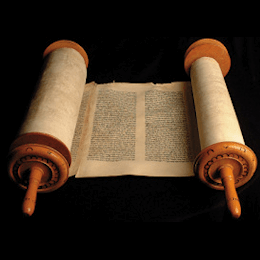Textus Receptus Bibles
Masoretic Text 1524
Old Testament
| 20:1 | וידבר יהוה אל יהושׁע לאמר׃ |
| 20:2 | דבר אל בני ישׂראל לאמר תנו לכם את ערי המקלט אשׁר דברתי אליכם ביד משׁה׃ |
| 20:3 | לנוס שׁמה רוצח מכה נפשׁ בשׁגגה בבלי דעת והיו לכם למקלט מגאל הדם׃ |
| 20:4 | ונס אל אחת מהערים האלה ועמד פתח שׁער העיר ודבר באזני זקני העיר ההיא את דבריו ואספו אתו העירה אליהם ונתנו לו מקום וישׁב עמם׃ |
| 20:5 | וכי ירדף גאל הדם אחריו ולא יסגרו את הרצח בידו כי בבלי דעת הכה את רעהו ולא שׂנא הוא לו מתמול שׁלשׁום׃ |
| 20:6 | וישׁב בעיר ההיא עד עמדו לפני העדה למשׁפט עד מות הכהן הגדול אשׁר יהיה בימים ההם אז ישׁוב הרוצח ובא אל עירו ואל ביתו אל העיר אשׁר נס משׁם׃ |
| 20:7 | ויקדשׁו את קדשׁ בגליל בהר נפתלי ואת שׁכם בהר אפרים ואת קרית ארבע היא חברון בהר יהודה׃ |
| 20:8 | ומעבר לירדן יריחו מזרחה נתנו את בצר במדבר במישׁר ממטה ראובן ואת ראמת בגלעד ממטה גד ואת גלון בבשׁן ממטה מנשׁה׃ |
| 20:9 | אלה היו ערי המועדה לכל בני ישׂראל ולגר הגר בתוכם לנוס שׁמה כל מכה נפשׁ בשׁגגה ולא ימות ביד גאל הדם עד עמדו לפני העדה׃ |

Masoretic Text 1524
The Hebrew text of the Old Testament is called the Masoretic Text because in its present form it is based upon the Masora—the Hebrew, textual tradition of the Jewish scholars known as the Masoretes (or Masorites). The Masoretes were rabbis who made it their special work to correct the faults that had crept into the text of the Old Testament during the Babylonian captivity, and to prevent, for the future, its being corrupted by any alteration. They first separated the apocryphal from the canonical books, and divided the latter into twenty-two books, being the number of letters in the Hebrew alphabet. Then they divided each book into sections and verses.
There is a great difference of opinion as to when the Masoretic Text was written, but it was probably accomplished in the 10th -11th century. Several editions existed, varying considerably, but the received and authoritative text is that of Jacob ben-chayim ibn Adonijah, who carefully sifted and arranged the previous works on the subject. It was published in 1524.